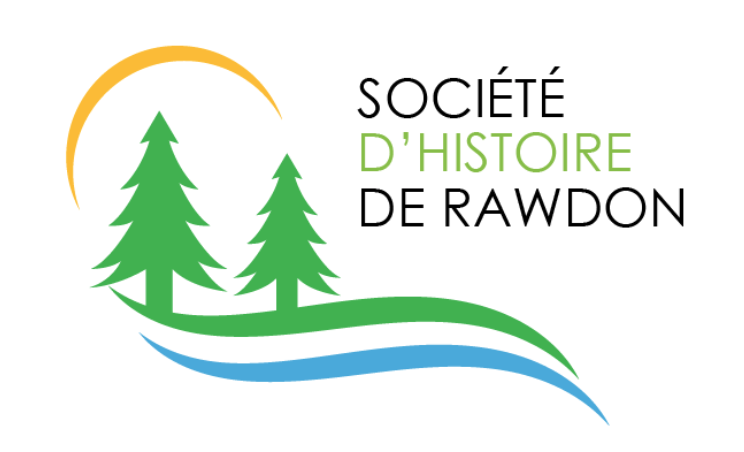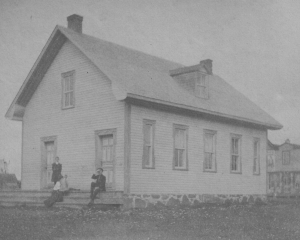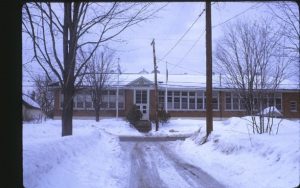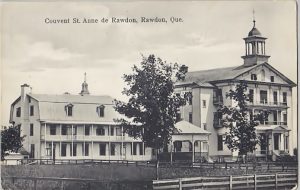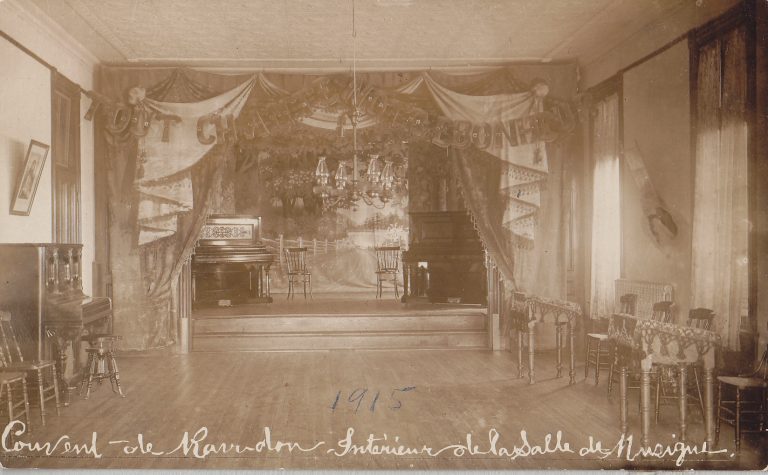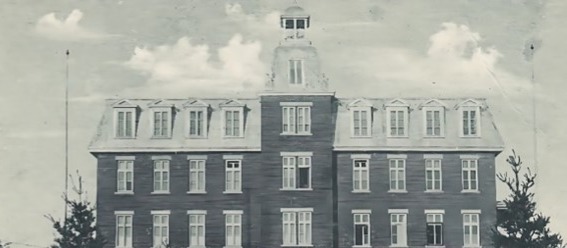Theme no. 7 of the exhibit “The Irish Presence in Rawdon, Yesterday and Today,” held at the Centre d’interprétation multiethnique de Rawdon, Saturdays and Sundays, between 2 p.m. and 4 p.m., from March 2 to 30, 2025 (except March 22).
First schools in Rawdon
Rawdon’s first schools were established by the Protestant and Catholic Irish immigrants. The first school was opened in 1826, at the Forks, with the support of the Royal Institution for the Advancement of Learning.
As early as 1824, citizens petitioned for the construction of a school and the hiring of a teacher. It was thanks to the Royal Institution for the Advancement of Learning that Rawdon’s first school was opened in 1826, in Range 2. The Irish Protestant Reverend J.E. Burton was in charge of this school. It became known as the school at the Forks and also served as an Anglican church for a time. Teaching was in English, but the school was open to all children, whatever their origin or religious denomination.
Another school was opened in the late 1820s, on lot 26 in Range 3.
This school was founded by Irish Protestants and Catholics, as evidenced by the names of the commissioners: John Robinson, Patrick Cassidy, Connolly Cassidy, James Cahill and Alexander Connolly.
A series of range schools were built in 1830 and 1860, encouraging local education.
In 1847, a report indicated that 527 pupils attended the 12 range schools. Diversity was celebrated in the range schools. In 1856, the school inspector noted that Rawdon was quite unique, academically speaking: “Anglicans, Irish, English, Scottish Presbyterians, Irish and French-Canadian Catholics” all learned side by side in the schools.
The evolution of range schools
By 1847, 527 students were attending these schools.
From the 1880s, two school administrations, one Protestant and one Catholic, replaced the Royal Institution for the Advancement of Learning. Irish children then attended schools according to their religious denomination.
After 1884, due to a lack of students, many Protestant range schools were merged. In 1947, the last Protestant range schools were closed, and the children were bused to the village school. Catholic range schools were closed 10 years later.
The creation of the Catholic School Board in 1863 initiated changes in Rawdon.
The village now had a Catholic school for boys, Saint-Louis School, also known as School 1, and a school for girls, Saint Anne Convent, or School 2. Both were attended by students of Irish and French-Canadian origin.
From the 1880s onwards, two independent school administrations, one Catholic and one Protestant, oversaw education according to religious denomination.
The range schools, which generally had just one classroom, gradually disappeared, and after 1900, pupils had to go to the larger village schools.
A village school for English speakers, which would become known as the white school, replaced the old school on Queen Street. The white school was built in the early 20th century, at the corner of Metcalfe Street and 4th Avenue. In 1950, it was replaced by another building, successively named Rawdon Consolidated School and Rawdon Elementary School.
Saint Anne Convent started out as an elementary school but later added secondary education. The introduction of the bilingual business course earned the school a great reputation throughout Quebec, Canada and New England.
Saint Anselm College was founded in the early 20th century by the Clerics of Saint-Viateur but financed by Rawdon notables, such as James Corcoran and Firmin Dugas. Its name was changed to Collège Champagneur in 1958.
